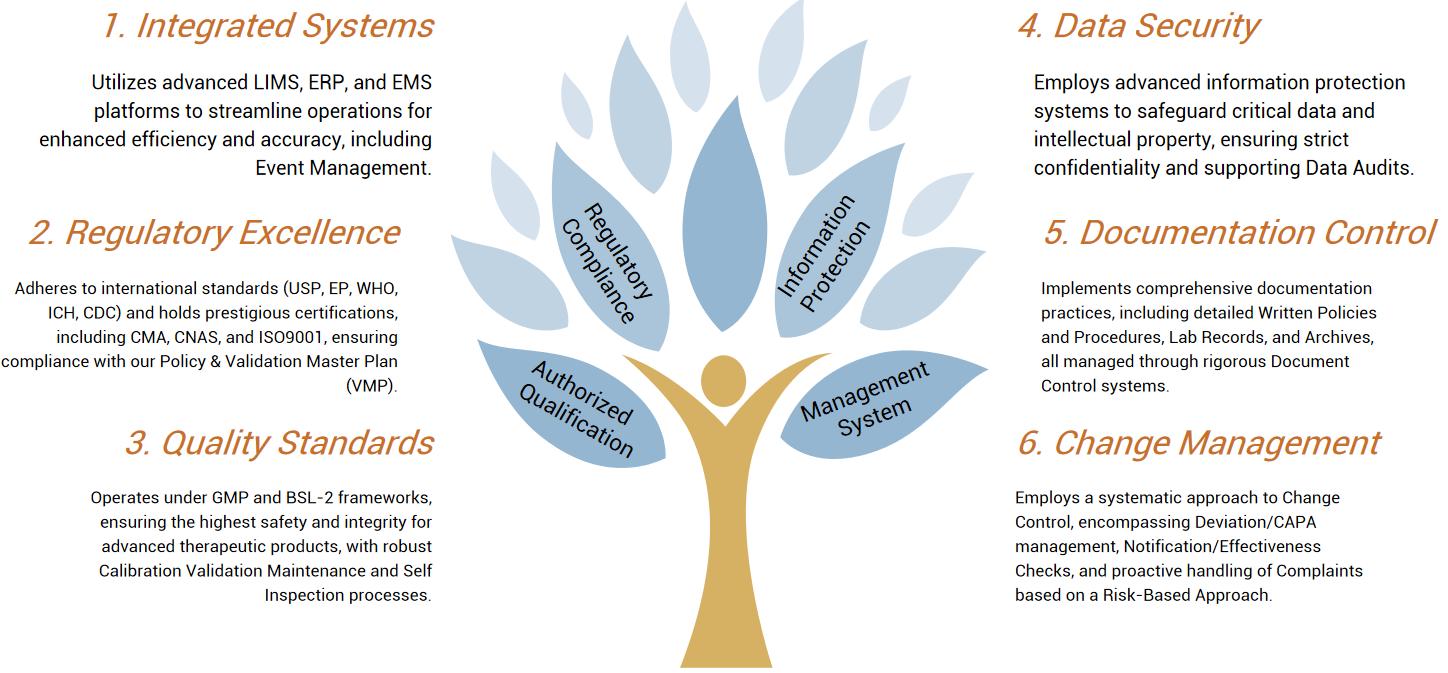One of the key challenges in the field of gene therapy is the safe and effective introduction of transgenes into cells to cure or reduce the severity of a disease. Viral vectors have proven to be one of the most effective means of achieving this goal, taking advantage of the natural ability of viruses to invade and introduce their genetic material into human cells. As a result, viral vectors are being developed for the treatment of a variety of diseases, including monogenic syndromes and cancer, and can be delivered in vivo, in situ, and ex vivo (cell therapy).
Several different viruses have been used as the basis for viral vectors, including adenovirus (AV), adeno-associated virus (AAV), retroviruses, lentiviruses (LV), and herpes simplex virus (HSV), each with its own advantages and limitations. Similar to actual viruses, viral vectors consist of genetic material enclosed in a protective protein shell, or capsid, and are potentially infectious. However, unlike natural viruses, viral vectors are engineered to be replication-defective by deleting gene sequences in the viral genome that are essential for viral replication and/or capsid production. This deletion can also make room for the transgene in the viral vector genome.
Throughout the viral vector development and manufacturing process, raw materials, any ancillary materials, plasmids, cell lines, and viral vector APIs and drug products are rigorously tested to determine their identity, content/activity/potency, quality, safety, and stability. These are critical steps to meet regulatory requirements and enable viral vector-based drug products to enter the market safely. This complex testing requires specialized scientific expertise and state-of-the-art instrumentation.
Consistency testing is performed to confirm that the purified viral vector API or drug product contains the correct nucleic acid sequence and viral capsid proteins. The nucleic acid component can be identified by sequencing or quantitative polymerase chain reaction (qPCR). The identity of the viral vector capsid proteins can be determined using Western blots or liquid chromatography with absorbance or mass spectrometry testing.
Consistency/potency testing is used to determine the number of infectious viral vector particles present in the drug substance or drug product. This can be accomplished by quantifying the number of viral genomes contained in the capsid particles using qPCR. While this method will indicate the number of genomes, it may not accurately reflect the potency of the viral vector, which depends on the infectivity of the particles and the expression/function of the transgene. To determine potency, infectious titer assays and cell-based assays are used to examine the ability of viral vector products to infect cultured cells, express their transgenes, and demonstrate functionality. The final readout of these assays depends on the transgene and can be assessed by various techniques, including qPCR, ELISA, or cell reporter systems.
Quality testing includes evaluating the physicochemical properties of the viral vector and determining the levels of process- and product-related impurities. Physicochemical properties assessed typically include appearance, pH, and osmolarity. Process-related impurities include residual host cell proteins, which are typically measured by ELISA, and residual host cell DNA and plasmid DNA, which are analyzed by qPCR. Other process-related impurities are residual compounds from the host cell growth medium (i.e., antibiotics, raw materials) or purification process (i.e., detergents, column precipitates) and are assessed using various techniques, including ELISA, liquid chromatography, and mass spectrometry. Evaluation of key product-related impurities includes determining the proportion of viral vector particles that contain nucleic acid (intact capsid) versus those that do not (empty capsid) or contain incorrect nucleic acid (irrational capsid). To determine the ratio of full to empty viral particles, a variety of methods can be used, including liquid chromatography, analytical ultracentrifugation, electrophoresis, qPCR, and electron microscopy. Inappropriate capsid levels can be determined using qPCR or sequencing methods.
Safety testing includes determining the presence of any harmful microbial contaminants, including bacteria, molds, fungi, mycoplasmas, and adventitious viruses. In addition, viral vector products are evaluated for the presence of bacterial endotoxins as well as replication-competent viral vector particles. The presence of any bacteria, molds, and fungi is determined by sterility testing, while for mycoplasmas, either culture or qPCR methods can be used. There are a variety of methods for detecting adventitious viruses, including PCR, ELISA, and electron microscopy for specific viruses, however, nonspecific methods that look for cytopathic effects in cell-based assays can also be used. To detect the presence of replication-competent viral vectors, a susceptible cell line is treated with viral vectors and tested for the presence of viral vector-specific sequences using qPCR or Southern blotting.
Container Closure Integrity Testing (CCIT) and Leachables & Extractables Testing. In addition to the above testing, the integrity of the container closure system and any potential compounds that may migrate from the container closure system in late clinical development need to be evaluated. There are many methods for evaluating CCIT, including dye intrusion, high pressure leak testing, oxygen headspace, and helium leak testing. Leachables and extractables components are determined using liquid chromatography and/or gas chromatography mass spectrometry detection.
Stability testing is a key component of any drug development program and includes analysis of the product's potency and quality attributes over time at storage, accelerated, and stressed temperatures. The goal of stability studies is to determine the shelf life of the product, but also to refine the product's attributes and predict stability and potency. For viral vectors, stability studies typically examine characteristics such as appearance, pH, assay, structural features, degree of aggregation, sterility, and potency.
Overall, viral vectors are complex biologics that require complex testing throughout the manufacturing process to ensure they are safe and effective for patients.
Comprehensive Biosafety Testing Solutions for CGT Products
Creative Biogene is a global biotechnology company specializing in providing biosafety testing services designed to ensure the safety and compliance of your CGT products. Our services encompass comprehensive testing solutions across the entire product lifecycle, including identity testing, potency assays, and purity assessments.

Figure 1. Complete Quality Management System

